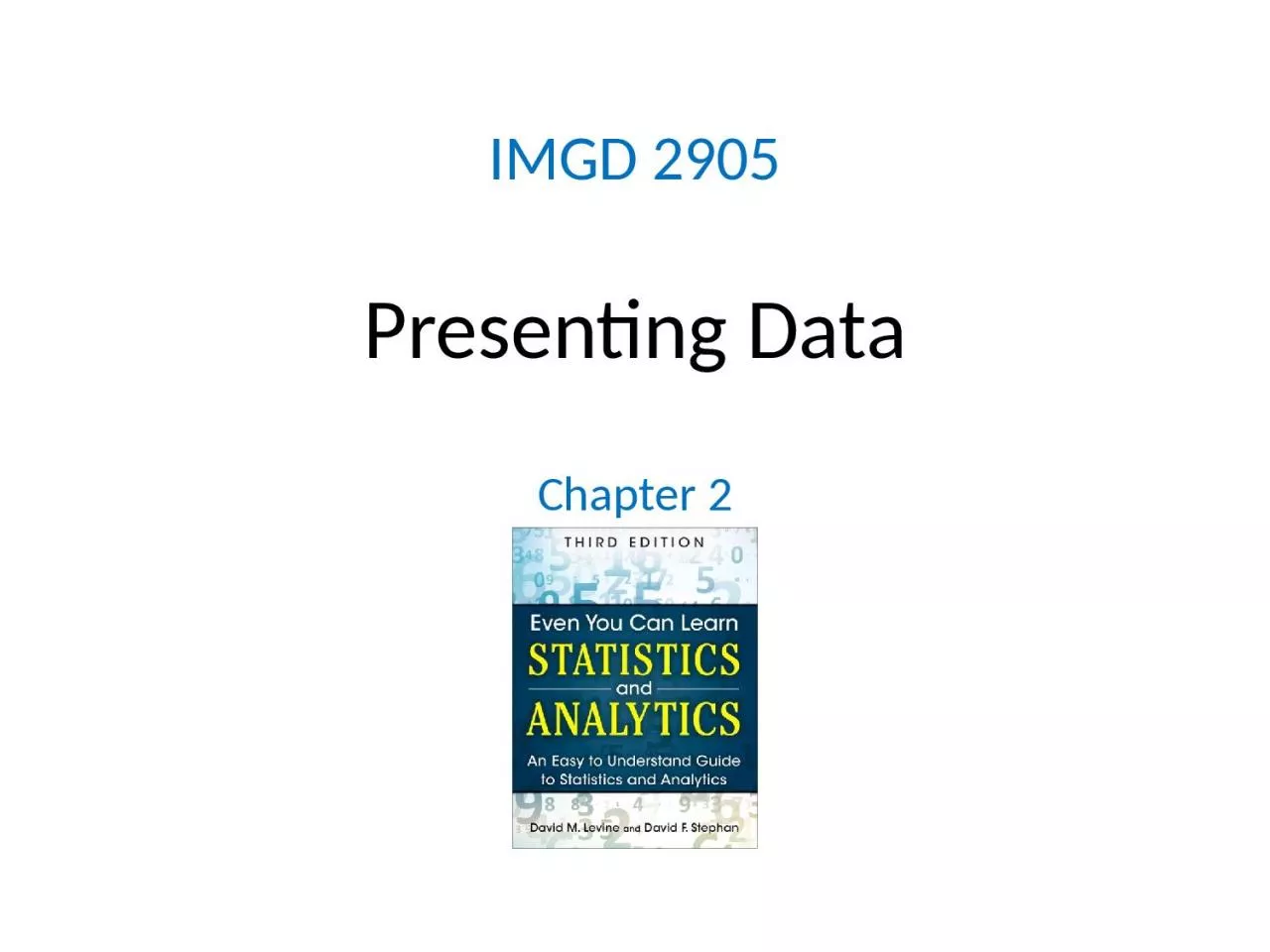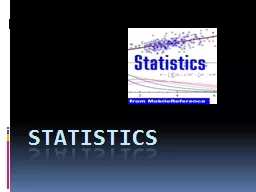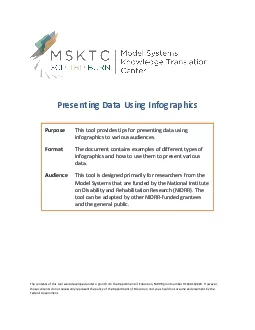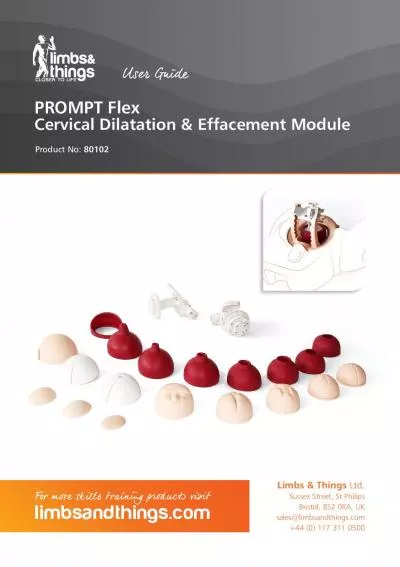PPT-Presenting Data IMGD 2905
Author : martin | Published Date : 2024-01-03
Chapter 2 2 Types of Variables Qualitative Categorical variables Can have states or subclasses eg rank platinum diamond gold Can be ordered or unordered eg bronze
Presentation Embed Code
Download Presentation
Download Presentation The PPT/PDF document "Presenting Data IMGD 2905" is the property of its rightful owner. Permission is granted to download and print the materials on this website for personal, non-commercial use only, and to display it on your personal computer provided you do not modify the materials and that you retain all copyright notices contained in the materials. By downloading content from our website, you accept the terms of this agreement.
Presenting Data IMGD 2905: Transcript
Download Rules Of Document
"Presenting Data IMGD 2905"The content belongs to its owner. You may download and print it for personal use, without modification, and keep all copyright notices. By downloading, you agree to these terms.
Related Documents














